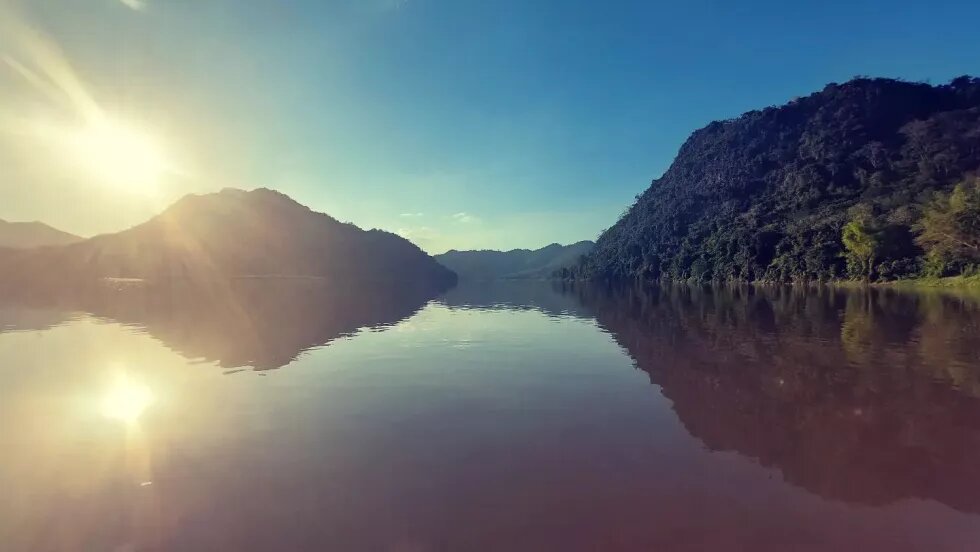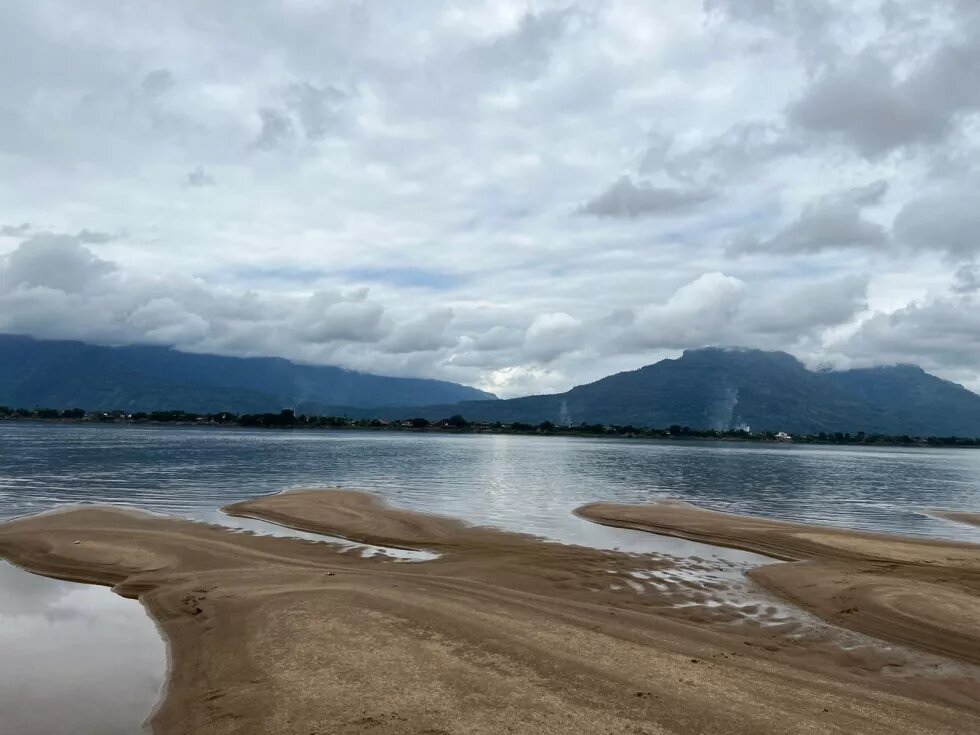
Like two sides to every coin, hydropower development offers benefits and disadvantages. Lao PDR has been constructing many dams, with assorted projects in various stages of completion. But what is the legal framework to ensure proper compensation for affected residents?

Hydropower development in the Mekong mainstream is first referred to in the report of Gilbert F. White in 1966, linking the Mekong River with development needs for power production, irrigation, navigation, and flood control (White, 1966:10). Currently within Lao PDR (Lao People’s Democratic Republic), a total of 429 dams have been identified with a total capacity of 29.171 MW and 129.589 GWh/year. Out of these, 246 projects are already signed for development via Memorandums of Understanding (MOUs), while 35 projects will be completed before 2025 and 58 projects will be operational before 2030. These dams include those in the Mekong mainstream such as Xayaburi, Luang Prabang, Sanakham (Xanakham), Pak Beng and others (Department of Energy Business and Planning, 2015).
Dams can generate foreign direct investment, contribute to economic growth, transfer of technology, and hiring of local labor. For example, electricity covers 8.9% of Laos’ GDP in the fiscal year 2021 (Bank of Lao PDR, 2022). However, hydropower creates challenges to dam-affected people, such as ongoing ways to continue their livelihoods via access to agricultural land, including dam safety. This article outlines the legal framework on resettlement, compensation and its implementation in the case of Luang Prabang Dam.
Dams in the Mekong mainstream and impact on population
Even though nine hydropower dams were identified in the Mekong mainstream inside Lao PDR, only Xayaburi Dam has been completed. The others, such as Pak Beng, Sanakham (Xanakham), and Pak Lay are in the initial stages of construction. The most advanced dam in development is Luang Prabang.
Luang Prabang Dam is one of the cascade dams in the Mekong mainstream inside of Lao PDR’s boundary. The dam is located about 4 km upstream of the confluence of the Nam Ou River and approximately 25 km from Luang Prabang city to the north. The installed capacity of the dam is 1,460 MW, with electricity exported to Thailand or Vietnam.
For the social impacts of Luang Prabang Dam, 26 villages will be affected by the project, located mainly in Chomphet and Pak Ou districts of Luang Prabang province, while there will also be impacts in Hongsa district of Sayabouri (also known as Xayaburi) province and Nga district of Oudomxay province in the north. Out of these villages, six villages with a total of approximately 2,885 people and 581 households will be fully affected by land acquisition. Nine villages of approximately 3,855 people and 692 households will be partially affected, while 259 households do not require resettlement. In relation to farmland, eight villages of approximately 2,330 people and 671 households will be impacted. For environmental impacts, three villages of approximately 904 people and 189 households downstream of the dam will suffer from dust and noise.
In total, over 10,000 people and over 2,100 households are impacted, directly or indirectly, by Luang Prabang Dam (Poyry, 2019). These households’ livelihoods are diverse and their income average ranges from USD 4,100–5,371 per year.
Resettlement and compensation: the legal framework in Lao PDR
In Lao PDR, laws and regulations regarding resettlement management from hydropower development projects are included in, but not limited to, the following: Law on Resettlement and Vocation (2018), Law on Electricity (2017) and Decree on Compensation and Resettlement Management in Development Projects (2016).
The Law on Resettlement and Vocation (2018) provides the principles, regulations and measures related to the management, monitoring and supervision of land and occupation allocation work in order to make the said work efficient and effective, correct, in line with the development and local reality to ensure that the Lao people of all ethnic groups in the land and occupation allocation area have housing, livelihoods and stable employment aiming to resolve illegal migration, eliminate poverty, improve the living conditions of the Lao people in terms of material and mental aspects, create peace and order in society, create developed villages, build large villages into rural towns, and contribute to the economic-social development of the nation and the defense of the nation-defense of peace. In addition, the law also specifies that general resettlement for people in rural areas should have access to development, including basic public services such as roads, hospitals and education. While specific resettlement includes displacement from the development project, this law also provides many rights and outlines obligations to the affected people and project developer or owner as well.
Article 69 of the Electricity Law (2017) notes resettlement which provides determining compensation units, determining the location and area of productive land (for crops) and land used for building purposes, the standards of relocation houses, infrastructure facilities, transitional assistance and livelihood recovery plans. Compensation units must be based on laws or regulations issued by the state from time to time. Article 70 of the same law also provides an obligation for compensation and resettlement to the project developer or project company.
The Decree on Compensation and Resettlement Management in Development Projects (2016) outlines the principles, regulations and standards on the management, monitoring of compensation of losses and the management of resettlement activities in order to properly and effectively implement development projects with the aims to ensure that any affected people are compensated, resettled and are assisted with permanent livelihood alternatives leading to improving of living conditions to be better off or at the same level as they were before. At the same time, this decree also creates 11 rights and obligations upon the developer regarding compensation and resettlement such as creating the compensation, resettlement, and livelihood restoration plans.
These legislations frame the resettlement and compensation for affected people of development projects including hydropower development.
Resettlement and Compensation for Luang Prabang Dam
By following the laws and regulations, the Luang Prabang Dam developer proposed resettlement to affected people into different locations, as well as compensation to affected assets. Houayngo village will be resettled about 3 km from the current village, Nasang village will be resettled about 1 km away, while Houaykhae, Kengken Khokkham and Lathan villages will be moved to north of the villages. People fully affected by the dam in Chomphet and Pak Ou districts will receive 600 m2 of homeland (Porry, 2019).
At the same time, the Governor of Luang Prabang province also issued the Decision on Compensation Unit Price for People Affected by the Luang Prabang Dam (No. 365/LPBG) (the Decision), dated 16 August 2021. According to this document, the following are examples of compensation to be received:
|
Land feature
|
Compensation unit price in Lao kip (LAK)*
|
|
Paddy field land adjacent to a sub-main road |
10,000 kip per meter squared (m2) |
|
Paddy field land connected to crossroads |
7,000 kip/m2 |
|
Paddy land field without connection to a road |
3,000 kip/m2 |
|
Garden land |
3,000 kip/m2 |
|
Feeding grass land (rotation of shifting cultivation) |
500 kip/m2 |
|
Construction land adjacent to main road |
150,000 kip/m2 |
|
Construction land connection to sub-main road |
80,000 kip/m2 |
|
Construction land connection to crossroad |
30,000 kip/m2 |
|
Construction land not adjacent to road |
10,000 kip/m2 |
|
Rubber tree (aged 13–30 years) |
up to 289,800 kip/tree |
|
Rubber tree (aged 1–3 years) |
46,800 kip/tree |
|
Teak tree (diameter from 61–80 cm) |
90,000 kip/tree |
|
Teak tree (diameter less than 10 cm) |
22,500 kip |
|
Pomelo tree (aged 5+ years) |
299,000 kip/tree |
|
Pomelo tree (aged 1–4 years) |
38,500 kip/tree |
* Note 10,000 kip = approx. USD $0.57 at time of writing
Paddy field land and land zoned for construction are offered at different prices, according to location and connection with other roads. Agriculture or productive trees and crops are also accounted for, with fruit compensated at varying prices for different kinds.
The compensation unit price is the price agreed between the affected residents of the dam and the developer, under the facilitation of the local administrative unit. However, the residents affected say that compensation for the lands are lower than the actual market price, while other compensations such as for the rubber tree and teak are suitable and acceptable. This is because the market land price in Pak Ou village is higher than when the Decision was made – for example, the construction land adjacent to the main road is approximately 500,000 kip/m2.
Aside from the resettlement and compensation for affected people, the project owner needs to assist the resettled people during the transitional period according to the plan to restore people's living conditions and necessary equipment for production, as provided in Article 26 in the Law on Resettlement and Vocation (2018) and Article 16 of the Compensation and Resettlement Management in Development Projects (2016).
Resettling and compensating affected residents properly is no easy task and reaching agreements across all sides about what is sufficient is challenging. Regular evaluation of livelihoods before and after resettlement should be taken into account for the project developer to review.
__
Dr. Sypha Chanthavong is the Head of Graduate Studies Program, Faculty of Law and Political Science, National University of Laos. As environmental law expert, his major focus is on applying legal measures to solve environmental issues such as water, land, pesticide use among others.
The views expressed by the author are not necessarily those of Heinrich Böll Stiftung.


